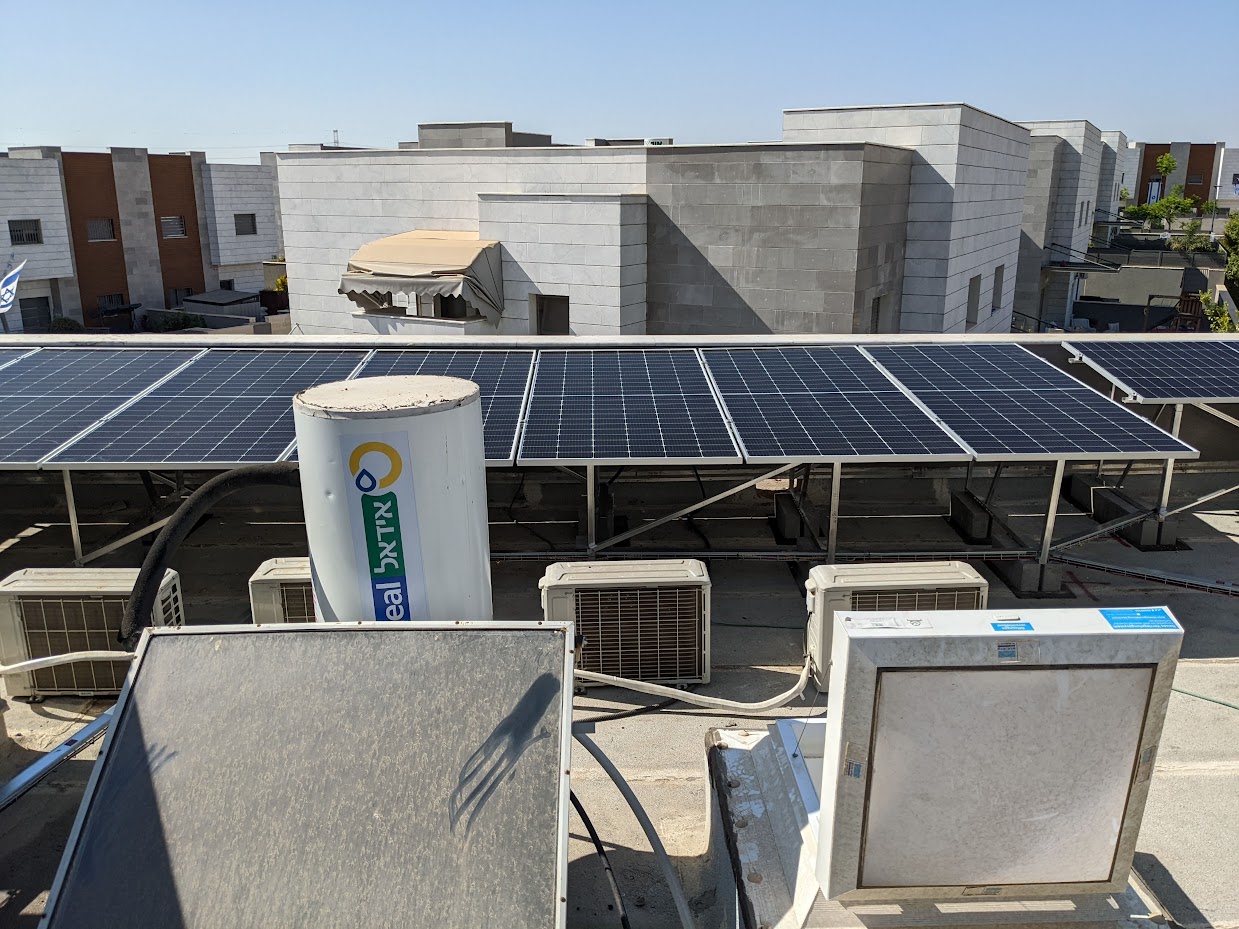I have both photovoltaic panels, and a solar boiler on my roof.

The solar boiler is in front, and the photovoltaic panels behind. You'll notice that they're at very different angles - the panel for the solar boiler is at approximately 55 degrees, whereas the photovoltaic panels are at about 10 - 20 degrees.
Why?
A solar boiler works by running water through a thin black panel, which gets very hot in the sun, and heats up the water. The hot water is then stored in a tank which can keep it hot for up to about a day.
A photovoltaic panel generates electricity from sunlight. In Israel, this electricity is fed directly into the grid, and we get paid 0.48 ILS per KWH. For perspective we pay about 0.51 ILS per KWH, so we get a pretty good price - there's no point storing the electricity in a battery to make sure we use it ourselves.
Both require direct sunlight to work, and both should be directly facing the sun to maximize efficiency.
However the use cases for both are completely different:
For the photovoltaic panels I want to maximize total energy produced. Since the sun moves around over the course of the day, the panels face south to maximize time in direct sunlight. And since the angle of the sun when it's in the south changes throughout the year, you'll want to angle the panels at about the average angle of the sun when it's in the south. This is equivalent to your latitude - in Israel 31 degrees.
There are a few complexities:
- You'll want to capture some light the rest of the day, which pushes for the angle to be steeper,
- During the winter the sky is cloudy and the sun is weak so you won't be able to capture much energy anyway. This pushes for the panel to be flatter, to optimize for the summer.
In practice it probably roughly evens out. In Israel the difference in efficiency between a completely flat panel and one at the optimal angle is only 10%.
For a solar boiler however my aim is completely different. I can't heat more than a single tanks worth of hot water, which is enough for my family of 4 and a couple of guests to have hot water, as well as plenty left over for washing up and miscellaneous use. During the summer we easily get this.
Thus there's no point optimizing the solar boiler for summer. Instead it has to be at a steep angle so that we still get a decent amount of hot water during the winter. In practice this works quite well, and we usually only need to turn on the electric boiler if we have guests or it's an especially cloudy day.
The same considerations apply if you're in a country where you can't sell PV power back to the grid - you'll get more peak energy than you'll use during the summer, so it's worth optimizing the angle for other times of day and other times of year.